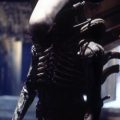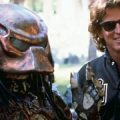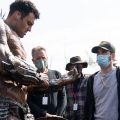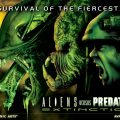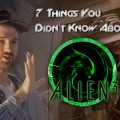Alec Gillis & Tom Woodruff Interview
Posted by Darkness on December 13, 2006 (Updated: 22-Aug-2023)
Tom Woodruff and Alec Gillis first met each other when they worked under Stan Winston in Aliens. A few years later, they left Stan Winston and formed their own company, Amalgamated Dynamics Inc, to pursue their own make-up and special effects projects. They’ve worked on lots of films throughout the last two decades including Tremors, Alien 3, Starship Troopers, Alien Resurrection, Hollow Man, AvP and most recently AvP2.
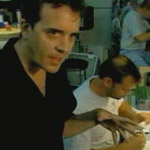
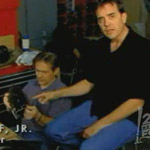
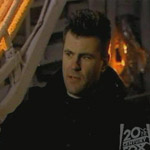
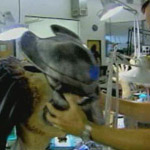

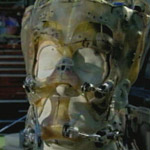

AvPGalaxy – What inspired you to work in creature design?
Alec Gillis – Both Tom and I had very similar influences. The films of Ray Harryhausen and other stop motion animators as well as the makeup work in the original Planet of the Apes were very influential. I also have a great interest in zoology and other sciences. By age thirteen I knew what my career would be.
AvPGalaxy – You of course worked with Stan Winston on “Aliens”. How did working with him influence you?
Alec Gillis – Stan was the first shop I worked at where there was an encouragement to have a “normal” life. Stan would usher us out the door at quitting time rather than have us burn ourselves out working ridiculous hours. Many shop owners tried to guilt an employee into working long hours, usually without pay. Stan was really a professional, and respectful person. We try to be that way too.
AvPGalaxy – Why did you decide to set up ADI? Did you have any difficulties setting up your own business?
Tom Woodruff – We originally left Stan Winston’s studio for a couple of reasons. We had recently produced and directed a short film to sell a feature horror comedy that was getting some interest from some production companies. At the same time, Stan was preparing to direct his second feature and was planning to scale back from the big effects shows on which we had recently been working. Not wanting to leave him in a lurch, we took advantage the direction in which he was headed and knew this would be the time to leave. You haven’t seen that horror comedy feature, have you?
Ultimately we had to do something to bring in the money and fell back on our strengths as Creature Creators to keep ourselves afloat as we developed other projects. Things took off for us in a hurry and within a few years we were heading up major films and receiving multiple nominations and an Academy Award – quite a diversion from creating our own properties.
We had learned a lot from Stan and knew how we wanted to run our business so it wasn’t too difficult at all to get off the ground with Amalgamated Dynamics, Inc., our company.
AvPGalaxy – So how did you and Alec get involved in the Alien franchise originally?
Tom Woodruff – I got a call at home from Gordon Carroll one afternoon shortly after Alec and I had broken off from Stan Winston. He asked if we were willing to travel to London to shoot Alien3. He set up a meeting for us to meet Fincher and things went ahead from there. He had quite a degree of comfort in sending us to England for the entire build and shoot schedule since we had been through the process a few years earlier on Aliens.
AvPGalaxy – With each progressive alien film, you changed the alien design. I suppose to give it a fresh look. How hard is it coming up with new designs while remaining true to the franchise?
Alec Gillis – The challenge of these films is to remain true to the design laid down so brilliantly by H.R. Giger, yet update and refine. Some of the changes we’ve made are for movement and practicality, especially now that the films have become so stunt oriented. Other changes we make are requests from the new directors. We try to give the creatures more threat and elegance as well as upping the “fright factor”.
AvPGalaxy – What’s your favorite alien design out of all the Alien films?
Alec Gillis – I like the heads we’ve just done for AVP II. They’re very threatening. As for individual creatures, I still think the Facehugger is absolutely brilliant.
Tom Woodruff – I’m partial to the design of Alien3. I liked returning to the domed head that was first seen in the original after having removed it in Cameron’s Aliens. I also liked the low-relief of the body sculpture and the fact that we went with a very highly detailed paint design to emulate the look of Giger’s original work. It’s funny that our intentions to be true to the original artist ended up being misunderstood by Giger himself as stealing his work.
AvPGalaxy – Which Alien film did you enjoy working on the most and why?
Alec Gillis – Without sounding egotistic, I think that the more recent ones are more enjoyable to work as we are considered by the crew and the studio to be the experienced hands, the voice of all things Alien and Predator. There’s a cache we have when doing these shows that make our lives easier. Not that we abuse it, it’s just that that perception helps to ensure a little common respect. It’s something we automatically give everyone we work with, but it’s nice to know you’ll get it back!
AvPGalaxy – How does it feel being in the alien suit, Tom? Doesn’t it get claustrophobic in there?
Tom Woodruff – I don’t feel it in a claustrophobic sense since I’m not claustrophobic. The suit is very tight and was designed and built to be that way, but it is also very flexible so it doesn’t impede my movement. But I definitely feel it. The lycra undersuit, to which the foam rubber skin is bonded, ends up leaving marks where the seams of the undersuit are because it compresses my body so much during the day. It tends to trap my body heat but once the slime coating is applied and then sprayed with water for each shot to keep it wet-looking, it quickly sucks the heat out of my body, so for the most part its pretty cold in the suit.
Luckily, Yuri Everson and the crew devised a method of removing the head, hands, and feet and be able to hide those seams so I was able to get out of the suit many times during the day when I wasn’t shooting. On earlier Alien features, everything was glued to the body suit as I got ready for camera, and the time to remove the head and hands for example, along with the additional physical stress it puts on the suit components, made it impractical to remove the suit in between shots. I would literally stay glued into the suit or eight to ten hours a day.
The worst part of the suit is the head. Even built as lightweight as possible, the animatronic head ends up between ten and twelve pounds, plus the battery hidden in the suit. The heads are built to be balanced as they sit above my head, with my face in the neck of the Alien. But because of the long shape of the head, there is a great deal of torque on my neck when I start getting into performance.
AvPGalaxy – How difficult is it to act when you’re in the alien suit? Since you can’t really see what you’re doing, does it just come natural to you?
Tom Woodruff – My vision in the head is limited to eyeholes buried in the details of the neck, the same way we hide breathing holes that line up with my mouth. With my head and neck in position I can at best see the ground and look for landmarks so much of my performance is done “blind”.
I’ve gotten good at being able to line myself up with other actors or set pieces with which I need to interact and then drop my head into position and play out the scene with precision. Part of it comes to me naturally. I’ve always had a knack for performance and being able to see myself from “outside” the Creature, like a third person or camera point of view. Part of it comes from having done it so many times, not just as then Alien in three films, but in many of the other Creatures and animals I’ve played over the years.
AvPGalaxy – Do you re-use items from previous alien films or do you create costumes etc from scratch?
Tom Woodruff – For the most part, everything has to be created as new pieces, although for AVP we were able to go back to the original molds of the Alien from Alien Resurrection to generate new body suits, hands, feet, tails, and heads. The costumes themselves don’t last in any really useful condition, although they survive as archive pieces. We still have an Alien suit from Alien3 that is in pretty decent shape considering its age, but it isn’t flexible enough to be worn anymore.
Since this was our first solo experience with the Predator, everything for him had to be created from scratch.
AvPGalaxy – Did you get any inspiration from the AvP comics when designing the Alien and Predator creatures?
Tom Woodruff – When we approach a project with the kind of fan base and wide range of iterations like AVP, it’s important to look at all the different versions which precede us. Obviously we want to put our own spin on the legacy but if something works, then we are reluctant to change it just for the sake of making it different. There were definitely some design elements in the comic which made their way into the film – some involving the very spiny look of the Queen Alien head for example.
AvPGalaxy – There are a lot of shots in AvP where alien suits are used, other times its animatronics and other times it’s CGI. How do you determine which is used? Do you have a preference?
Tom Woodruff – We’ve always maintained that if we can get a shot with practical elements, it is much more effective and satisfying than CG. Even a mix of real effects with digital manipulation, or something as simple as rod removal, has more of a real feeling to it. Having said that, there are still many things that cannot be achieved with a man in a suit or the most sophisticated animatronic.
We were lucky to have John Bruno as the Visual Effects Supervisor, as it is the Supervisor who determines the general approach to an effect. John, like many of the more well-rounded Supervisors with experience in both worlds, also prefers to use CG as a last resort when there is no other way to achieve the shot.
AvPGalaxy – What was it like creating the predators in AvP since you only had experience in creating aliens? Was it a lot harder?
Alec Gillis – The Predator was a bit of uncharted territory. Of course, it’s a creature suit and that’s what we do, but there are always fan expectations. We had a lot of input from Paul Anderson so that helped things move along quickly, since he knew what he wanted. He was a real joy to work with because of his decisiveness. We knew that our Predator would in a way be a prototype for our company, and we are thrilled to have another crack at it on AVPII.
AvPGalaxy – How about the Queen Alien in AvP? How was it changed from Aliens and Alien Resurrection? Was it a lot easier to make this time around?
Tom Woodruff – Actually the Queen Alien was the biggest, most complicated Animatronic we’ve ever built, which is also what makes her so different from what’s been done before in the other films. In Aliens, she was built around two stuntmen inside her body that would control both the large and small pairs of arms. They were suspended from a crane arm and the head was operated by a simple hydraulic control rigged to a power steering wheel to turn the head from side to side. It was simple but very, very effective.
For Alien Resurrection, we borrowed the original Aliens Queen head from Bob Burns, an actor and film archivist whom Cameron had given the head. We added a new paint scheme and used that head along with a body we created and arms and legs pulled from the original Aliens molds. Fans will be relieved to know we have since returned the head to its original Aliens paint finish!
For AVP, we started from scratch, again using the Bob Burns Aliens head – but this time for reference only. The resulting animatronic puppet stood 14 feet tall with a complete range of movements, all powered by hydraulic pistons and controlled by a sophisticated computer animation system. Even the arms were powered this time so we had quite a bit of performance opportunities. Plus, with the animation system, we were able to record entire libraries of, for example, arm movements, and then refine and edit them to smooth them out. We could even play them back at various speeds.
AvPGalaxy – Is there anything in AvP that you weren’t happy with or would have preferred to have spent more time on?
Alec Gillis – Of course, we always want more time than we actually get. That is the key to success in this field: having time to work the bugs out. We never have enough time, and I hope fans can appreciate what we do in such compressed schedules. There’s really no one else who can do what we do in the time we do it in. (Hey, haven’t we earned some bragging rights?)
AvPGalaxy – I thought you did a great job on the predator masks in AvP but a lot of criticism from fans was directed at the predator face designs. Some fans said the designs looked too plastic-like. Did the director Paul Anderson have a lot of input into the predator designs?
Tom Woodruff – There is never a shortage of criticism today, that’s for sure. The problem has always been and will always be that you can’t satisfy everyone; we, the director, the studio, and every fan – everyone has his own take on what personally moves them. That’s part of what makes movies such a challenge – trying to encompass key aspects of design and execution that tell the story that needs to be told. Like every director, Paul had his input and guidelines on many elements, but in others he let us take the lead. You share the credit for what works for some and you take in stride what doesn’t work for others.
AvPGalaxy – Many thanks for the interview. Much appreciated.
Related Links:
Official Website


